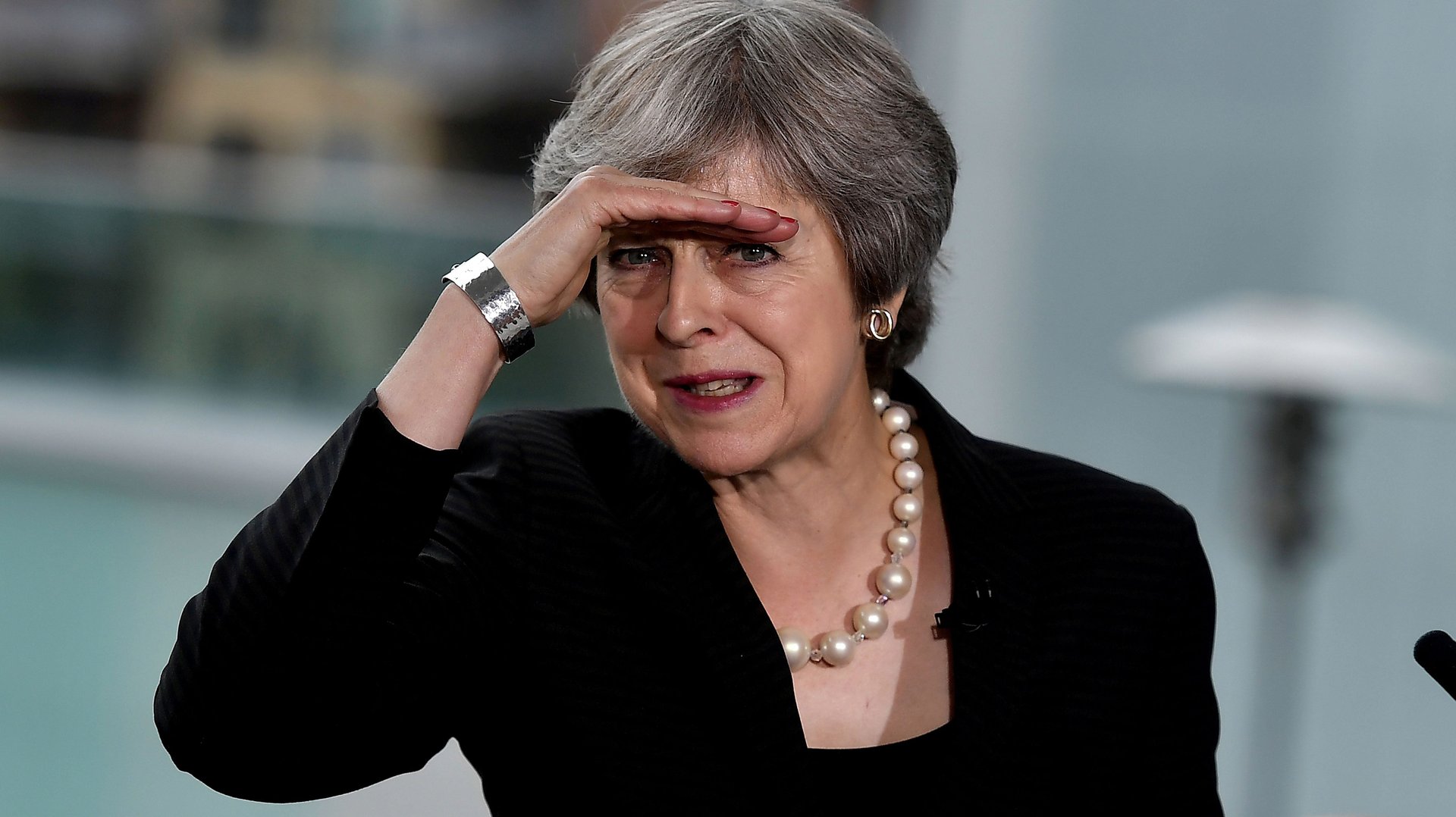Brits are frantically Googling for “no deal Brexit”
Last month, it seemed like everyone was doubling down on preparations for the Brexit nightmare scenario: Britain crashing out of the European Union in March with no trade deal in place. This is known, plainly, as a “no-deal Brexit.”


Last month, it seemed like everyone was doubling down on preparations for the Brexit nightmare scenario: Britain crashing out of the European Union in March with no trade deal in place. This is known, plainly, as a “no-deal Brexit.”
Since then, the chorus of no-deal warnings has grown: Bank of England governor Mark Carney thinks the likelihood of no deal is “uncomfortably high,” UK trade secretary Liam Fox says the odds are “not much more than 60-40,” and Bloomberg reported yesterday that British prime minister Theresa May is planning a September cabinet meeting (paywall) to discuss how to prepare for a no-deal Brexit.
What does it mean? Well, Google searches for the phrase “no deal Brexit” are skyrocketing, surpassing comparable searches for the two other main Brexit options—a “soft Brexit,” which would see Britain maintain close trading ties with the EU after it leaves the bloc, and a “hard Brexit,” which would see the UK negotiate a deal but still leave the EU’s single market, which guarantees free movement of goods, services, capital, and people.
So, either British civil servants have taken to their government-issued keyboards to figure out what the UK is heading for, or the general public is now equally as panicked after reading the headlines.